Buying a home is one of the biggest financial decisions you’ll make in your life. The mortgage you choose will determine how much you’ll pay each month, how much interest you’ll pay, and how long it will take to pay off your loan.
Two of the most popular mortgage options are FHA and conventional mortgages. In this article, we’ll compare the two and detail the pros and cons of each mortgage type.
FHA Mortgage
An FHA (Federal Housing Administration) mortgage is a government-backed mortgage program designed to help low-to-moderate income borrowers buy a home.
The FHA insures the loan, which means that if you default on the loan, the FHA will pay the lender back. This guarantee allows lenders to offer FHA loans to borrowers who might not otherwise qualify for a conventional loan.
One of the main benefits of an FHA loan is that it requires a lower down payment than a conventional mortgage. While conventional mortgages typically require a down payment of at least 5%, FHA loans only require a down payment of 3.5%. This can make it easier for people to afford a home, especially if they don’t have a lot of savings.
Another benefit of an FHA loan is that it’s easier to qualify for than a conventional mortgage. FHA loans have more lenient credit score requirements, so people with lower credit scores can still get approved.
Additionally, FHA loans allow for higher debt-to-income ratios, which means you can have more debt and still qualify for a loan.
However, there are also some downsides to FHA loans.
One is that they require mortgage insurance, which can add to your monthly payment. Mortgage insurance is required for all FHA loans, regardless of how much you put down. This insurance protects the lender in case you default on the loan.
Another downside is that FHA loans have limits on how much you can borrow. These limits vary depending on where you live and can be as low as $472,030 or as high as $1,089,300 (with exceptions in Alaska, Hawaii, Guam, and the Virgin Islands of up to $1,633,950).
If you’re looking to buy a more expensive home, you may not be able to get an FHA loan.
Advantages of an FHA Mortgage:
Low Down Payment
One of the biggest advantages of an FHA loan is the low-down payment. With an FHA loan, you can put down as little as 3.5% of the home’s purchase price, making it easier to afford a home.
Lower Credit Score Requirements
Another benefit of an FHA loan is the lower credit score requirements. While conventional loans typically require a credit score of 620 or higher, an FHA loan only requires a credit score of 500 or higher (with a down payment of at least 10%).
More Lenient Debt-to-Income (DTI) Ratios
FHA loans are also more forgiving when it comes to your debt-to-income (DTI) ratio, which is the percentage of your monthly income that goes toward paying off debt. With an FHA loan, you can have a DTI ratio of up to 43%, whereas conventional loans typically have a maximum DTI ratio of 36%.
Assumable
FHA loans are assumable, which means that if you sell your home, the buyer can take over your FHA loan. This can be an attractive selling point for potential buyers.
Disadvantages of an FHA Mortgage:
Mortgage Insurance Premium (MIP)
FHA loans require mortgage insurance premiums (MIP), which is an additional cost that can add up over time. You’ll have to pay an upfront MIP fee of 1.75% of the loan amount, and then an annual MIP fee that’s typically around 0.85% of the loan amount.
Lower Loan Limits
FHA loans have lower loan limits than conventional loans, which means that if you’re looking to buy a more expensive home, you may not be able to qualify for an FHA loan.
Property Requirements
FHA loans have property requirements that must be met before you can buy a home with an FHA loan. The home must be your primary residence, and it must meet certain safety, security, and soundness standards.
Conventional Mortgage
A conventional mortgage is a type of home loan that is not guaranteed or insured by the government, such as the Federal Housing Administration (FHA) or the Veterans Administration (VA). Here are some of the advantages and disadvantages of a conventional mortgage:
Advantages of a Conventional Mortgage:
No Mortgage Insurance
If you make a down payment of 20% or more, you can avoid paying for private mortgage insurance (PMI), which can be a significant cost.
More Flexibility
With a conventional mortgage, you may have more options in terms of loan term, interest rate, and payment schedule.
Lower Costs
Conventional mortgages typically have lower costs rates than government-backed loans such as the FHA upfront MIP Fee of 1.75%.
Disadvantages of a Conventional Mortgage:
Higher Credit Requirements
Conventional mortgages usually require a higher credit score than government-backed loans. A high credit score is generally considered to be 720 or higher.
Larger Down Payment
With a conventional mortgage, you typically need to make a down payment of at least 5% of the purchase price, whereas government-backed loans may allow for lower down payments.
Stricter debt-to-income Requirements
Conventional mortgages often have stricter debt-to-income (DTI) requirements, which means that your monthly debt payments cannot exceed a certain percentage of your monthly income.
Bottom Line
Overall, a conventional mortgage may be a better choice if you have a strong credit history, can afford a larger down payment, and want more flexibility in terms of loan options. However, if you have a lower credit score or cannot afford a large down payment, a government-backed loan may be a better option..
We Can Help
If you would like to speak to us and learn more about this topic, please feel free to contact us at 800-653-8987 or email us at hello@loanprofessors.com.

